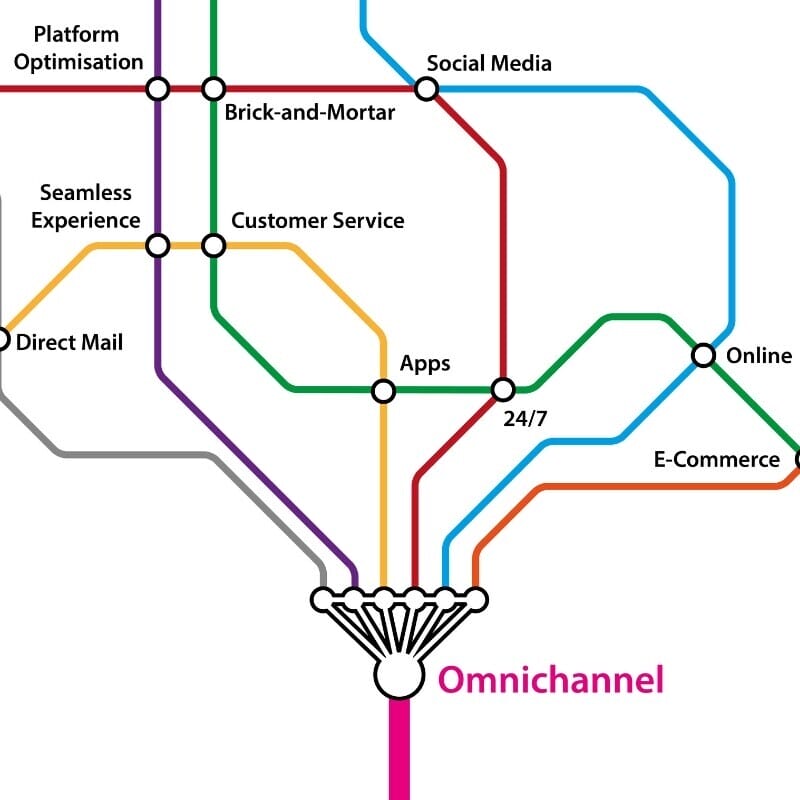A customer-centric approach isn’t just about making your customers happy—it’s about creating a win-win situation where both your business and your customers thrive. When you prioritize understanding and meeting customer needs, you cultivate loyalty, boost sales, and create a positive ripple effect that benefits everyone involved.
Discover the top 7 customer-centric strategies that can help you achieve this mutually beneficial outcome and build a thriving eCommerce business.
Table of Contents
Introduction to Customer-Centric ECommerce Strategies
Customer-centricity is crucial for eCommerce success. It’s not just about having the best products or the flashiest website. Instead, success hinges on understanding and meeting the needs, wants, and preferences of your customers.
When you prioritize customer-centric strategies, you create a business that listens to and adapts to your customers’ needs. This approach not only boosts customer satisfaction and loyalty; it drives sustainable growth. Loyal customers are more likely to make repeat purchases and recommend your brand to others, sometimes even more effectively than traditional marketing methods.
Let’s explore the top seven customer-centric strategies that can help sustain your eCommerce business:
Personalization: Tailoring Customer Experiences
In the bustling world of eCommerce, personalization stands out as a crucial strategy. Customers today expect more than just generic shopping experiences. They seek interactions and recommendations that resonate personally with them, making personalization no longer a luxury but a necessity.
Understanding Customer Preferences
Understanding what your customers prefer starts with gathering data. This could be through their browsing history, past purchases, or even direct feedback. The key here is not just to collect the data but to utilize it effectively. By analyzing these preferences, you can tailor product recommendations, emails, and even website layouts to individual tastes.
Imagine walking into a store where the salesperson knows exactly what you like and makes recommendations based on that knowledge. This is what personalization does for your eCommerce business. It’s about creating a shopping experience that feels unique to each customer.
Utilizing Data for Personalized Recommendations
Personalized marketing campaigns can lead to higher engagement rates. When customers receive offers and promotions that align with their interests, they are more likely to convert. This not only increases sales; it builds stronger customer loyalty. They feel valued and understood, which translates to repeat business.
Investing in personalization tools is a wise move. There are many software solutions available that can help you analyze customer data and automate personalized communications. From email marketing platforms to on-site personalization tools, these resources can make implementing personalization strategies more manageable.
Benefits of a Personalized Shopping Experience
The benefits of personalization extend beyond just immediate sales. Building a relationship with your customers based on their preferences fosters a sense of loyalty. They’re more likely to come back and make repeat purchases, which is key to sustained eCommerce success.
Seamless Omnichannel Presence
Maintaining a unified brand presence across multiple channels is vital in today’s digital landscape. Customers interact with brands in various ways—through websites, social media, physical stores, and mobile apps. Ensuring these channels work together seamlessly can significantly enhance customer experience and satisfaction.
Creating a consistent brand experience across all platforms is crucial. Consistency means that whether a customer browses your webshop, visits your physical store, or interacts through your social media, they perceive the same brand values and aesthetics. This familiarity builds trust and makes navigation easier.
Integrating online and offline channels is another crucial aspect. For example, offering services like buy-online-pickup-in-store (BOPIS) can bridge the gap between digital and physical experiences. This convenience can drive more traffic to physical stores while providing flexibility to customers.
A seamless customer journey is vital. This means simplifying the transition between channels. If a customer adds an item to their cart on your website, they should be able to view and purchase it later on your mobile app without any issues. Syncing these experiences ensures that customers don’t face any hurdles, making the shopping process smooth.

Leveraging technology to achieve this integration is essential. Using customer relationship management (CRM) systems or omnichannel retail software helps in tracking customer interactions and providing a cohesive experience. These tools assist in gathering insights across all touchpoints, enabling you to refine your strategy continuously.
A seamless omnichannel experience isn’t just about technology—it’s about understanding your customers and meeting their needs, no matter where they are. Listening to customer feedback about their cross-channel experiences can provide invaluable insights. Use this feedback to identify gaps and continuously improve the omnichannel journey.
Exceptional Customer Service
Exceptional customer service is a cornerstone of eCommerce success. In an era where customer expectations are higher than ever, delivering outstanding service isn’t optional—it’s essential.
Responsive customer support can make a significant difference in how your brand is perceived. Customers appreciate quick and effective resolutions to their issues, which can turn a negative experience into a positive one. Providing multiple channels for support, such as email, phone, and live chat, ensures that customers can reach out in the way they’re most comfortable with.
Implementing 24/7 customer service solutions is another way to stand out. With customers shopping at all hours, having support available around the clock can address issues and inquiries promptly. This availability not only improves customer satisfaction but also builds trust in your brand.
AI and chatbots have revolutionized customer service in recent years. These technologies can handle routine inquiries swiftly, freeing up human agents to deal with more complex issues. AI-driven chatbots can provide instant responses, guide customers through troubleshooting steps, and even assist with order tracking. By integrating AI, you can ensure that help is always at hand, improving responsiveness and efficiency.
Training your customer service team to be empathetic and solution-oriented is critical. Empower your agents with the tools and information they need to resolve issues effectively. When customers feel that their concerns are understood and addressed, they are more likely to remain loyal to your brand.
Exceptional service is about more than just handling complaints; it’s about creating a supportive and helpful environment for your customers. Whether it’s through prompt responses, empathetic interactions, or leveraging technology, delivering top-notch customer service can set your brand apart in the competitive eCommerce landscape.
Leveraging Customer Feedback and Reviews
Understanding and utilizing customer feedback is a powerful way to enhance your eCommerce business. Feedback serves as a direct line to your customers’ thoughts and experiences, offering invaluable insights into what works and what doesn’t.
Collecting and analyzing this feedback should be routine. Surveys, reviews, and direct customer interactions are some of the best ways to gather this data. It’s not just about information but interpreting it to make meaningful changes. Actively listening to what your customers say helps you identify pain points and areas for improvement.
Incorporating feedback into your business strategy shows customers that their opinions matter. This responsiveness can lead to improvements in product offerings, website functionality, and overall service. When customers see their feedback being addressed, it fosters a sense of involvement and loyalty.
Engaging directly with reviews, both positive and negative, is crucial. Responding promptly to reviews shows customers that you care about their experience. For negative reviews, offering solutions or apologies demonstrates a commitment to customer satisfaction and can often turn disgruntled customers into dedicated ones.

Transparency is vital. Sharing how you’re addressing feedback, whether through updates or direct communication, builds trust. Let customers know their voices are heard and valued. This openness can enhance your reputation and encourage more customers to share their thoughts.
Leveraging feedback effectively helps build a community around your brand. When customers see that their feedback leads to real change, they become more engaged and loyal. This customer-centric approach can significantly impact your eCommerce success, driving continuous improvement and fostering long-term relationships.
Loyalty Programs and Customer Retention
Engaging customers consistently is essential for long-term success in eCommerce, and loyalty programs play a key role in achieving this. These programs are designed to reward customers for their continued patronage, creating an incentive for them to return.
The benefits of loyalty programs are manifold. They not only encourage repeat purchases but also enhance customer satisfaction by making customers feel valued. Offering rewards, whether through points, discounts, or exclusive offers, provides tangible benefits that can make a customer choose your store over a competitor’s.
Effective rewards and incentives are crucial for a successful loyalty program. When designing these, consider what would be most appealing to your customers. Conducting surveys or analyzing purchasing patterns can help tailor your incentives. For instance, if your customers frequently buy certain products, offering discounts on future purchases of those items could be effective.
Engagement goes beyond just the rewards. Communicating regularly with your loyal customers helps keep your brand top-of-mind. This can be done through personalized email campaigns, exclusive early access to sales, or special birthday offers. These touches show appreciation and encourage ongoing engagement.
Maintaining long-term customer relationships requires more than just occasional rewards. It involves consistent efforts to provide value and recognize loyalty. This could mean prioritizing loyal customers for new product releases or offering them special services.
Loyalty programs should also evolve based on customer feedback and changing market trends. Regularly reviewing and updating your program keeps it fresh and relevant, ensuring it continues to meet customer needs and preferences. This adaptability can sustain customer interest and participation over the long term.
Online tools and software can simplify managing loyalty programs. Platforms that track customer purchases and automate reward distribution make it easier to maintain these programs efficiently. They can also provide valuable insights into customer behavior, helping you refine your strategy further.

Ultimately, a well-executed loyalty program can deepen customer relationships and significantly contribute to your eCommerce success. By recognizing and rewarding loyalty, you create a community of satisfied customers who are more likely to stick with your brand.
Fast and Reliable Shipping
Fast and reliable shipping is a critical aspect of eCommerce success. Customers today expect their purchases to arrive quickly and in perfect condition. Meeting these expectations can significantly enhance their shopping experience and boost your brand’s reputation.
Speed and dependability in delivery services can’t be overlooked. When customers receive their orders promptly, it not only meets their expectations but also builds trust and encourages repeat business. To achieve this, optimizing your shipping processes is essential.
Strategies to Optimize Shipping Processes
Partner With Reliable Couriers.
One way to streamline your shipping is to partner with reliable couriers. These partners can ensure that your packages are delivered on time, reducing delays and enhancing customer satisfaction. Additionally, consider offering multiple shipping options. Some customers may be willing to pay extra for expedited shipping, while others may prefer a more economical choice.
Maintain Accurate Inventory Management Another key strategy is to maintain accurate inventory management. Ensuring that products are in stock and ready to ship can prevent delays. Utilizing inventory management software can help monitor stock levels and predict when to reorder items, keeping your supply chain running smoothly.

Exercise Transparency
Transparency in the shipping process is also vital. Providing customers with tracking information allows them to monitor their orders and reduces anxiety about delivery times. Clear communication about delivery schedules and any potential delays is crucial for maintaining trust.
Package Products Sustainably
Packaging plays a significant role in reliable shipping. Products should be packed securely to prevent damage during transit. By investing in quality packaging materials and techniques, you can reduce the likelihood of returns due to damaged goods, saving costs and resources.
Create a Customer-friendly Return Policy
Returns management is another important aspect to consider. A straightforward and customer-friendly return policy can enhance the overall shopping experience. When customers know they can easily return items if needed, they’re more likely to make a purchase.
To sum up, fast and reliable shipping is about more than just speed. It’s about the entire process—from order placement to final delivery. By addressing each of these elements thoughtfully, you can significantly enhance customer satisfaction and loyalty.
Secure and Easy Payment Options
Providing secure and straightforward payment methods is crucial for eCommerce. Customers need to feel confident that their transactions are safe and that their payment process is hassle-free. Offering a variety of payment options caters to different preferences and can reduce cart abandonment.
Ensuring transaction security is paramount. Customers are more likely to complete purchases if they trust that their information is protected. Implementing robust security measures—such as SSL encryption, secure payment gateways, and compliance with payment card industry (PCI) standards—helps mitigate risks and build trust.

User-friendly payment processes can significantly enhance the shopping experience. This means designing a checkout process that is simple and doesn’t require unnecessary steps. Offering guest checkout options and auto-filling customer information can speed up the process, making it more convenient.
Multiple payment options are essential. From credit and debit cards to digital wallets like PayPal and Apple Pay, and even Buy Now, Pay Later (BNPL) services, accommodating diverse preferences can attract a broader customer base. The more options you provide, the easier it is for customers to complete their purchases.
Streamlining the checkout process involves reducing friction points that can cause cart abandonment. One-click purchases, clear calls to action, and visible security icons can reassure customers and encourage them to complete their transactions.
Regularly updating your payment infrastructure is necessary to keep up with evolving technology and customer expectations. Monitoring the latest trends in payment methods ensures you remain competitive and meet customer preferences.
Clear communication about your payment policies, including any fees or refund processes, is important. Transparency builds trust and can prevent misunderstandings that might deter potential buyers. Make sure all relevant information is readily available and easy to understand.
Conclusion: Implementing Customer-Centric Strategies for Long-Term Success
Reflecting on the previous sections, it’s clear that prioritizing a customer-centric approach in eCommerce can solidify sustained success. These strategies —from personalization to secure payment options —form a comprehensive framework that not only meets but exceeds customer expectations.
To implement these strategies effectively, begin by thoroughly understanding your customer’s needs and preferences. Utilize data insights to personalize experiences, integrate omnichannel services seamlessly, and ensure exceptional customer service becomes a hallmark of your brand.
Listening to and acting on customer feedback can drive continuous improvement, while well-designed loyalty programs help keep customers engaged and returning. Ensuring fast, reliable shipping further enhances customer satisfaction, and providing diverse, secure payment options eases the transaction process.
Consistently applying these principles takes dedication and adaptability. The market evolves, and so should your strategies. Regularly reviewing performance, gathering new data, and adjusting your approach will keep your business aligned with customer expectations.
Ultimately, a customer-centric approach isn’t just about individual tactics; it’s about fostering a culture that values and prioritizes customer experience at every touchpoint. When customers feel valued and understood, they’ll not only return but also advocate for your brand, driving long-term success.




